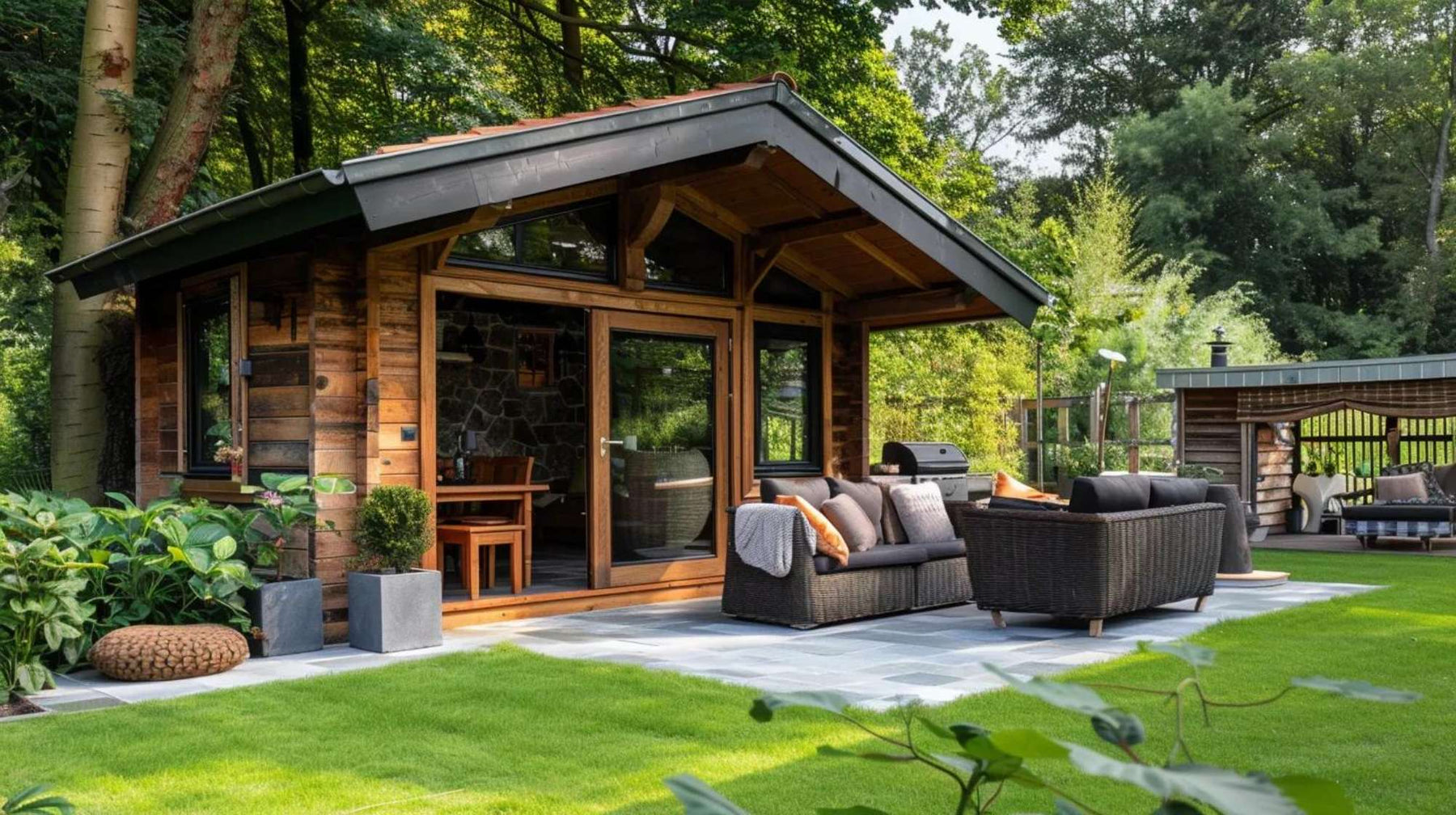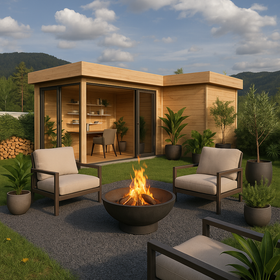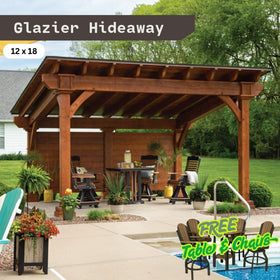512-777-0154

Are Tiny Homes Worth It? Breakdown of Costs, Lifestyle, and Legality
Are tiny homes worth it? It depends on how much you value simplicity over square footage.
For some, they’re a dream come true: freedom from debt, clutter, and the nine-to-five grind. For others, they’re a tight squeeze that tests patience and creativity.
This guide unpacks what tiny living really costs, how it changes daily life, and the legal fine print you should know before going small.
1. The Financial Case for Tiny Homes: Costs and Savings
Tiny homes are often marketed as an affordable escape from traditional housing costs. That can be true, but the details matter. Between building, land, and utilities, the price can add up fast.
Let’s break down what you’re really paying for and where you might save big.
A. How Much Does a Tiny Home Really Cost?
Tiny homes come in all shapes, styles, and price points. A pre-built unit can range from $30,000 to $60,000, while a DIY build might land between $9,000 and $25,000 once materials and labor are factored in.
Those willing to roll up their sleeves can find kits for $4,000 to $10,000, though time, tools, and patience are part of the hidden price tag.
a. Cost Comparison: DIY vs. Custom-Built vs. Tiny House Kits
| Type | Estimated Cost | Customization | Effort Level |
|---|---|---|---|
| DIY Build | $9,000–$25,000 | High | High |
| Pre-Built / Custom | $30,000–$60,000+ | Medium | Low |
| Tiny House Kit | $4,000–$10,000 | Moderate | Medium |
DIY builds suit the hands-on dreamer who loves control and saving money. Pre-built homes work for those who want to move in quickly. Kits are a happy middle ground for people who like a challenge but don’t want to start from scratch.
b. The Hidden Costs: Land, Utilities, and Site Prep
Even tiny homes need a place to rest. Land, permits, and utility hookups often surprise first-time buyers.
Depending on your location, site prep and setup can run anywhere from $5,000 to $20,000. You’ll also need to consider the cost of water, electricity, and waste systems. Off-grid setups save money long-term but require a higher upfront investment in solar panels or composting systems.
c. Understanding the Price Per Square Foot
On paper, tiny homes can look expensive at $200 to $400 per square foot. But when the total square footage is 200 instead of 2,000, the overall cost is still dramatically less. You’re paying for efficiency, not excess space.
B. Funding Your Tiny Home: Financing and Loans
Financing a tiny home can be tricky since most banks don’t treat them like traditional houses. Still, there are ways to make it work.
RV Loans and Personal Loans: The Primary Financing Options
If your tiny home is on wheels, you might qualify for an RV loan. Stationary homes usually fall under personal loans. These come with higher interest rates and shorter terms but offer flexibility for unique builds.
Why Traditional Mortgages Rarely Apply to Tiny Homes
Most lenders want homes that meet local building codes and are fixed to a permanent foundation. Tiny homes often don’t fit that box. As a result, they’re seen more like vehicles than real estate, which keeps traditional mortgages off the table.
C. Tiny Homes as an Investment: Do They Depreciate in Value?
Tiny homes don’t usually grow in value like traditional houses. They can, however, pay off through lower living costs and rental potential. Some homeowners rent theirs out as Airbnb-style getaways, turning a simple cabin into a steady income source.
Tiny Homes on Wheels (THOW) vs. Foundation-Built Homes
- THOWs are affordable and mobile but depreciate faster.
- Foundation-built homes are sturdier and may appreciate slightly, especially when the land gains value.
The Value of Land vs. The Value of the Structure
Land almost always appreciates. A tiny home, like GardenHouse24 USA Harbord 70 Garden Room, sitting on owned land can be a smart balance between freedom and investment, especially in desirable areas.
D. How Much You Can Save on Ongoing Expenses
Living small means spending less on just about everything.
a. Lower Utility Bills and Energy Consumption
A tiny home costs less to heat, cool, and power. Most owners spend $100 to $300 a month on total utilities. Solar panels, energy-efficient appliances, and smart designs can shrink that even further.
b. Reduced Maintenance and Insurance Costs
Less space means less to clean, fix, or insure. Maintenance usually runs 1–3% of the home’s value annually, and insurance costs are far lower than traditional home coverage.
2. The Tiny Lifestyle: Pros and Cons of Living Small
Living tiny isn’t just about saving money; it’s a whole lifestyle shift. It’s about trading clutter for clarity and things for experiences. But it’s not without challenges.
A. The Benefits: Financial Freedom and Simplicity
Tiny homes invite you to slow down and live intentionally.
a. Achieving Financial Freedom and Debt Reduction
Many tiny homeowners pay off their homes within a few years, freeing them from decades of debt. With fewer bills, it’s easier to travel, save, or simply enjoy life without financial stress.
b. The Appeal of the Minimalist and Less-Consumptive Lifestyle
Living small forces you to prioritize. You keep what matters most and let go of the rest. It’s freeing to realize that comfort doesn’t require clutter.
B. The Challenges: Space Constraints and Comfort Trade-offs
Of course, tiny living has its growing pains—ironically.
a. Storage and the Difficult Task of Downsizing Your Belongings
Downsizing sounds fun until you start choosing between your favorite jackets and that box of keepsakes. Creative storage solutions help, but tough decisions are part of the deal.
b. Sacrificing Full-Size Appliances and Counter Space
Cooking in a tiny kitchen is a test of patience and precision. Compact appliances and multipurpose furniture make it work, but you’ll miss those long countertops during dinner prep.
c. Navigating Lack of Privacy and Family Expansion
Living in a few hundred square feet can feel cozy—or crowded. For couples or families, privacy requires creativity and clear communication.
3. The Legal and Logistical Hurdles of Tiny Homes
Legal red tape is one of the biggest barriers to tiny living. Regulations vary wildly between cities, so research is crucial before you build or park your home.
The Biggest Challenge: Navigating Zoning Laws and Building Codes
Some municipalities welcome tiny homes. Others treat them like unwanted guests.
a. Minimum Square Footage Requirements by Municipality
Many cities still require a minimum home size, sometimes 400 to 1,000 square feet. That instantly disqualifies most true tiny homes, so always check local ordinances first.
b. Differentiating Between an Accessory Dwelling Unit (ADU) and a Tiny Home
ADUs are small secondary units built on an existing property. Tiny homes, by contrast, are standalone. ADUs often have a clearer legal path but lack the mobility of a true tiny home.
Where Can You Legally Place a Tiny Home?
Finding a legal place to park or build is half the challenge.
a. Tiny Home Communities and RV Parks
Dedicated tiny home communities and RV parks are growing across the country. They often come with legal zoning and built-in amenities like laundry and Wi-Fi.
b. Considerations for Parking a Tiny House on Wheels on Private Property
You can park on private land in some regions, but zoning rules vary. Always confirm with your local municipality before settling down.
c. Off-Grid Living: Water, Septic, and Electrical Requirements
Going off-grid offers independence but takes planning. You’ll need water storage, septic or compost systems, and power sources like solar or wind.
Is Tiny Living Right for You?
So, who actually thrives in a tiny home? It’s not for everyone, but for the right person, it can be life-changing.
Who Benefits Most from the Tiny Home Movement?
a. Retirees and Down-sizers
Retirees love tiny homes for their low upkeep and affordable price tags. Downsizing also means more time for hobbies and travel instead of maintenance.
b. Remote Workers Craving Mobility (Digital Nomads)
For remote workers, a tiny home on wheels is freedom in motion. Your office view can change from a mountain lake to the beach without losing Wi-Fi.
c. Individuals Seeking a Stepping Stone to Traditional Home Ownership
A tiny home can be a smart way to build savings and equity before buying a traditional home later on.
Tiny Homes vs. Alternative Small Housing Options
Tiny living isn’t the only way to go small.
Comparing Costs and Benefits: Micro Homes and Container Homes
Micro homes and container homes share the same spirit but vary in comfort and design. Container homes are sturdier and often meet more local building standards.
When a Small Condo or Manufactured Home is a Better Fit
If you prefer urban living and fewer legal headaches, a small condo or manufactured home might make more sense. They’re compact, efficient, and easier to finance.








